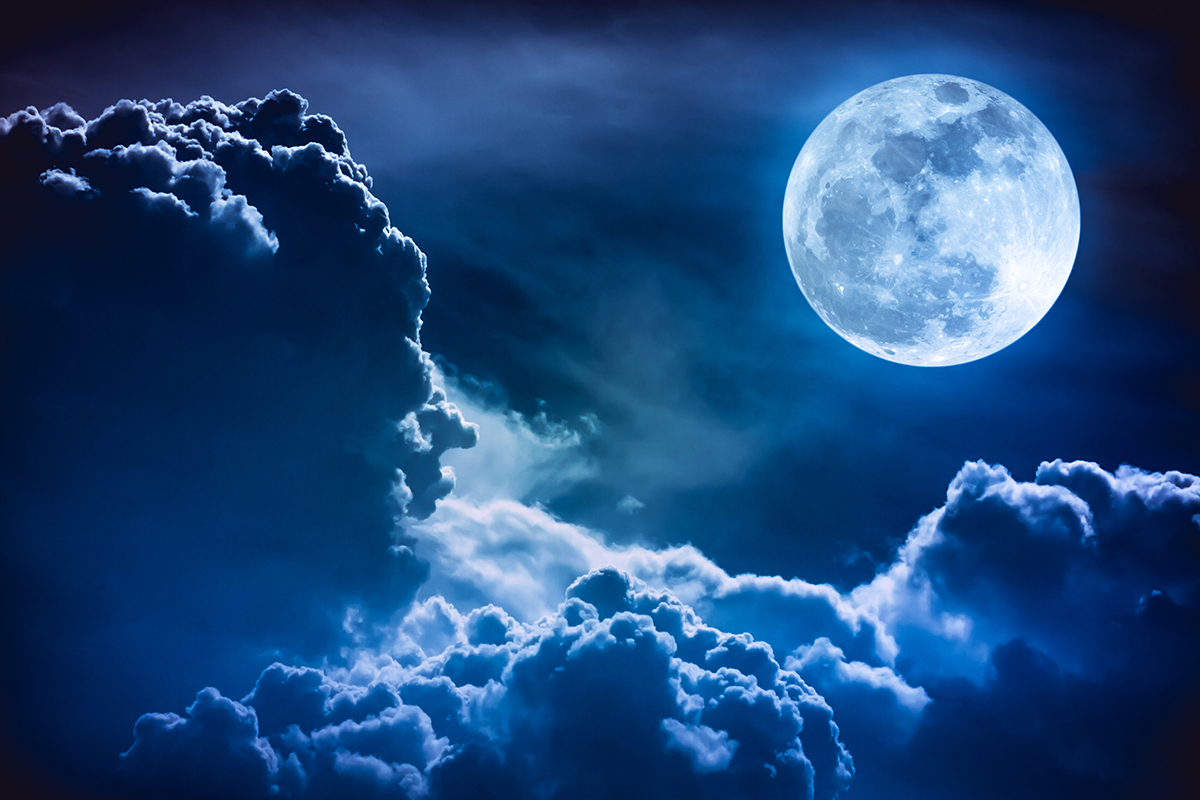As August opened with the brilliance of a supermoon, it’s set to conclude in a similar style with another dazzling lunar display. Not only that, but Saturn, the ringed planet, will be shining at its brightest for the year, positioned near this moon.
The full moon will reach its zenith at 9:36 p.m. ET on August 30th, maintaining its fullness until Friday morning, says NASA.
By Wednesday’s twilight end, around 8:42 p.m. ET, Saturn’s luminous glow will sit approximately 5 degrees to the moon’s upper right. As the night progresses, Saturn seems to circle the moon in a clockwise manner. At their closest, they’ll be separated by a distance roughly four times the moon’s diameter, as described by EarthSky.
On August 27, Saturn hit its opposition, which is when Earth sits between Saturn and the sun. This means Saturn is nearest to Earth on its trajectory, rendering it a visible gem in our nocturnal canopy.
EarthSky confirms that both of August’s full moons are classified as supermoons. A supermoon, as commonly understood, refers to a moon that orbits closer to our planet, making it seem more prominent and luminous in the sky. This particular moon will be roughly 18,000 miles closer than its usual distance, being 222,043 miles away from Earth.
This proximity can cause the moon to have a heightened gravitational pull, which may influence Hurricane Idalia, intensifying tides and exacerbating the storm surge. National Hurricane Center’s Deputy Director, Jamie Rhome, suggests the tide might rise by nearly a foot.
The occurrence of two full moons in a month is termed a blue moon. The saying “once in a blue moon” captures its rarity. And, contrary to what the name suggests, it doesn’t take on a blue shade.
Given that a full moon typically graces our skies every 29 days and our months usually span 30 or 31 days, this misalignment gives rise to a blue moon roughly every 2.5 years. The last was seen in August 2021.
Moreover, this second August full moon aligns with the Hindu festival of Raksha Bandhan, honouring the relationship between siblings.
Supermoons & Full Moons
Come September 29, 2023, the sky will see its fourth and last supermoon of the year.
As per the Farmer’s Almanac, the upcoming full moons of 2023 are:
● September 29: Harvest moon
● October 28: Hunter’s moon
● November 27: Beaver moon
● December 26: Cold moon
Eclipses: Lunar & Solar
An annular solar eclipse awaits viewers in North, Central, and South America. This phenomenon sees the moon eclipse the sun when it’s relatively distant from Earth, casting a radiant ring. It’s essential to wear eclipse glasses for safe viewing.
October 28 will showcase a partial lunar eclipse, visible across various global regions.
Meteor Showers
In regions devoid of light pollution, upcoming meteor showers are set to illuminate the sky from evening till dawn. Their peak dates are:
● Orionids: October 20-21
● Southern Taurids: November 4-5
● Northern Taurids: November 11-12
● Leonids: November 17-18
● Geminids: December 13-14
● Ursids: December 21-22.
As the year progresses, the heavens continue to showcase their splendour with supermoons, eclipses, and meteor showers. Whether you’re a seasoned stargazer or just someone who occasionally glances up at the night sky, these celestial events offer moments of wonder and reflection. With such an array of astronomical delights on the horizon, make sure to mark your calendars and find a quiet spot away from city lights to truly embrace the universe’s wonders.







